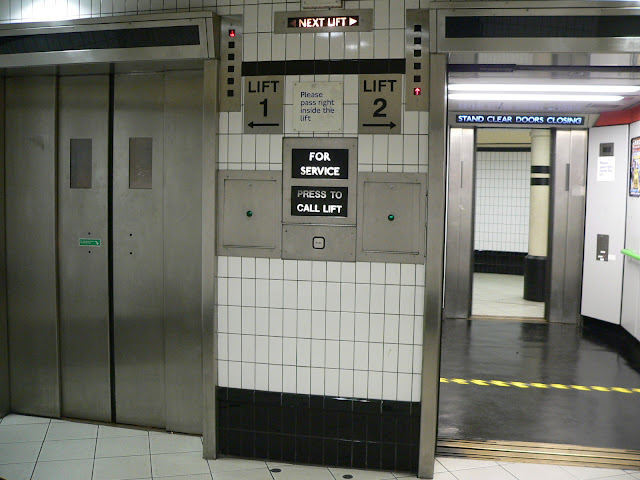All You Need To Know About Elevator Traction Machines
The elevator traction machines India utilizes the cables and machines to reposition the elevator up and down the hoistway conventionally with a counterweight system to balance out the elevator.
Here Are The Types Of
Traction Elevators
Geared Traction
Machines: Geared
traction machines are operated by AC or DC electric motors. Geared machines
utilize worm gears to control the mechanical maneuver of elevator cars by
rolling steel hoist ropes above the drive sheave connected to a gearbox
operated by a highspeed motor. These machines are typically the ultimate option
for overhead or basement traction use for speeds up to a maximum of (2.5m/s)
500 feet per minute.
To enable proper speed
control of the motor, to allow precise leveling, and for passenger support, a
DC hoist motor operated by an AC/DC (MG) motor-generator set was the chosen
solution in high-traffic elevator installations from past many years.
The motor-generator
set also conventionally energized the relay controller of the elevator, which
has the added benefit of electrically insulating the elevators from the rest of
the electrical system buildings.
Therefore terminating
the transient power stab in the building's electrical supply produced by the
motors starting and stopping. For example, causing the light to go dim whenever
elevators are utilized. Also, the other electrical instrument's interruption is
produced by arching the relay contractors in the control system.
- Gearless Traction Machines:
Gearless elevator traction machines are high torque,
low-speed (low RPM) electric motors energized either by AC or DC. In such a
case, the drive sheave is straightforwardly connected to the end of the motor.
Gearless traction elevators can outstretch up to (10m/s) 2,000 feet per minute
or even higher.
A brake is organized
between the drive sheave (or gearbox) and motor to grip the elevator stationary
on a floor. This brake is generally an external drum type and is operated by
spring force and held open electrically. A power collapse will cause the brake
to captivate and stop the elevator from falling.
- Machine Room Less (MRL):
Machine Room Less
(MRL) elevators are the latest to the US commercial market. The technology
offers the capacity to use more of the building space which can be utilized for
elevator machinery. However, the suspension means reliability, ride quality,
cost of this application are still a work in progress.
Basic Information
In each of the case,
the cables are connected to a hitch plate below a cab, i.e., underslung or even
on top of the cab, and then bound over the drive sheave to a counterweight
joined to the opposite end of the cables, which minimizes the amount of power
required to move the cab.
The counterweight is
positioned in the hoistway and rides a different railway system; as the car
moves up, the counterweight relatively goes down and vice versa. This operation
is energized by the traction machine, which the controller administers,
conventionally a computerized device or relay logic that directs acceleration,
starting, stopping, and decelerating the elevator cab.
The counterweight
balance is generally equal to the elevator cab weight, plus 40 to 50 percent of
the elevator capacity. The grooves in the drive sheave are specifically
constructed to stop the cables from slipping. The traction is offered to the
ropes by grasping the grooves in the sheaves, consequently the name.
Unfortunately, as the ropes get ages and traction grooves to wear, some ropes
must be substituted, the traction is lost, and the sheaves are replaced or
repaired.
Rope and sheave wear
may be significantly minimized by ensuring that every rope has equal tension,
which means evenly sharing the load. Rope tension equalization may be
accomplished utilizing a rope tension gauge and is the most straightforward way
to increase the lifetime of ropes of the sheaves.
Benefits Of Elevator
Machines Traction India
- Energy efficiency:
Perhaps the most
attractive benefit of the traction elevator is its efficient utilization of
energy compared to the hydraulic alternative. It is because of the utilization
of a counterweight that actively equalizes the cab's load as the travelers are
transported from floor to floor. On the other hand, hydraulic elevators utilize
a pump, operating against the gravity's force to move the transport passengers
and the cab. Unfortunately, all of this power is lost when the cab ultimately
descends, making them a destructing selection in energy efficiency.
- Performance:
The utilization of a
counterweight proves that beneficiary in the construction of the traction
elevator as it provides passengers as much excellent performance quality.
Overall, the cab transition from ascending to descending is exceptionally
smooth, assisting those who fear elevators and making them feel more relaxed.
In addition to that, the traction elevators are much speedier, which is why
they are often utilized in contemporary high-rise skyscrapers and high-rise
buildings.
- Size:
The traction elevators
are popularly known its modern developments and being bulky, which means that
they no longer need ample space for installation. The machine room-less (MRL)
traction elevators continue to be popular with each emerging year and locate
the motor inside the elevator shaft. As a result, it makes the traction
elevator systems just as adaptable as hydraulic elevator systems.
Conclusion:
From the above-given
information, we have learned that it is crucial to put aside personal
preferences and decide based on the requirements. It will help you to discover
the model that goes with your budget accordingly. Therefore the elevator
machine traction India is highly concerned about the versatility of the
traction elevator and assists you to find out the suitable traction system for
your property. Their team is accommodating, so it's never late to connect with
them and fulfill your requirements.



Comments
Post a Comment